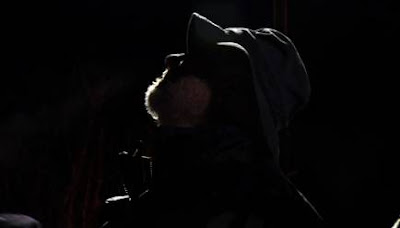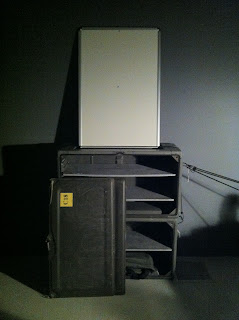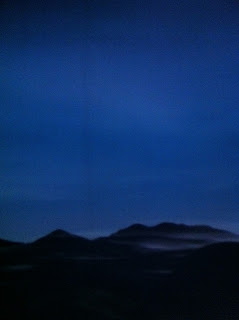EXHIBITION
The exhibition we visited in the morning was in the city of Bath, where The Holburne Museum was holding an exclusive photography exhibition based on still life called the "Art of Arrangement" which exemplified an array of prints dating back to as early as the first few decades of the 19th century. The collection explored the the traditional value of still life concept and composition while invoking a new medium of creative expression. The space was divided into section displaying theme running through the timeline, the first "A Dialogue with Painting" which was begun with the work of Roger Fenton (b.1819-1869), William Henry Fox Talbot (b.1880-1877) and Frederick G. Tutton (b.1887-1930) which all illustrate a heavy reseambles to 17th Centry painting of fruit, flowers and chalices on cloaked tables resembling the withering and decay of time in a vibrant manor of a frozen image.
 |
| William Henry Fox Talbot, A Fruit Piece from Pencil of Nature, 1845 gutenberg.org |
 |
| Roger Fenton, Still Life With Ivory Tankard and Fruit, 1860 guardian.co.uk |
 |
| Roger Fenton, Still Life with Parain Vase, Grapes and Silver Cup, 1860 firsttimeuser.tumblr.com |
 |
| Frederick G. Tutton, Dessert, 1923 ocanorjacks.com |
The Second section of the exhibition, "On Close Inspection" feature work that used photography for scientific purposes. In terms of recording information through radiography & xray photography, these techniques and approaches were used to unveil hidden forms of natural that could not be seen with the unassisted vision. Here we see more of Talbot's microscopic work, as well as William Henry James Coombs and Josef Maria Eder (b.1855-1944).
 |
| William Henry Fox Talbot, Insect Wings (as seen in a solar microscope), 1840 shadedbower.wordpress.com |
 |
| Josef Maria Eder, Frosche in Bauch-und Ruckenlage. 1896 telegraph.co.uk |
Another series of images titled "Arrangements in Negative" illustrated a number of ways of printing using several negatives in order to produce a single photograph. Artists such as Jerry Uelsmann (b.1934) and Henry Peach Robinson (b.1830-1901) experiment with this method of layering and montaging.
 |
| Henry Peach Robinson, Fading Away, 1858 photomontage.tumblr.com |
 |
| Jerry Uelsmann, Memory and the Sun, 1966 flickr.com |
 |
| Edward Weston, Detail of Abandoned Car (Mojave Desert in New Mexico), 1937 |
 |
| Nick Hedges, (Birmingham Winson Green) Shop Doorway, 1971 |
 |
| Arthur Rothstien, The Bleached Skull of a Steer on the Dry Sun-Baked Earth of the South Dakota Badlands, 1936 |
This was then followed by "Movement and Stillness" which accompanied artists who's work became fascinated with the notion of passing and and freezing a moment, such as Eadweard Muybridge (b.1830-1904) Harold Edgerton (b.1903-1990) and Arthur Clive Banfield (b.1875-1965). Some of these image had scientific and particle purposes, where as some were pure creativity.
 |
| Harold Edgerton, Bullet Through Jack of Diamond, 1955 cs.nga.gov.au |
 |
| Phillippe Halsman, Dali Atomicus, 1948 utata.org |
 |
| Eadweard Muybridge, Animal Locomotion (Plate 758), 1887 artlyst.com |
We then moved onto the collection demonstrating prints from a variety of artists, such as David Williams (b.1952), Laszlo MoHoly-Nagy (b.1895-1946) and Alexander Rodchenko (b.1891-1956). Their work relates to the topic "Reflection on Light and Dark", which showed the definite link between photography and light whether it be natural or artificial.
 |
| Alvin Langdon Coburn, Vortograph No2, 1917 memoryprints.com |
 |
| Alexander Rodchenko, Glass and Light, 1928 valentinamoncada.com |
 |
| Raymond Moore, Ayr, 1979 azurebumble.wordpress.com |
One of my favourite sectors of the exhibition was the assortment of images under "Order and Disorder", as not only did these photographs relate back to still life arrangements and objects, but were all taken my documentary photographers who have found structure and chaos in the everyday. Bellow are some of the executed prints from Ian Beesley (b.1954) , Dorothea Lang (b.1895-1965) and Jem Southam (b.1950)
 |
| Jem Southam, Horticultural Show Carn Brea, 1992 photomonth.com |
 |
| Dorothea Lange, Corner of the Dazey Kitchen, 1939 galloimages.co.za |
 |
| Ian Beesley, Pieces (Drummonds Mill, Bradford), 1986 ianbeesley.com |
We being to see the involvement of the human form in the following collection "Still Life with Figure" which is not a usual convention when it comes to this particular genre. However, such artists as Chris Killip (b.1946), Horst P Horst (b.1906-1999) and Edward Steichen (b.1879-1973) are infamous for their portraiture works and have bridged their specialities with the symbolism that accompanies fine art.
 |
| Angus McBean, Miss Dorothy Dickson, 1938 thetranscendentalmodernist.tumblr.com |
 |
| Alexander Rodchenko, MEHA BCEX, 1924 artvalue.com |
 |
| Horst P. Horst, Gloves (New York) , 1947 printed-editions.com |
 |
| Helen Chadwick, Vanity II, 1986 terminartors.com |
The final part of the exhibition was named "The Subversive" in which these prints invoke the primary purpose of photography, be that documenting life and events, and reflect the traditional forms of still life. However the images have been dragged into a contemporary context with a dark twist, illustrating the work of Karen Knorr (b.1954), S.M West and Don McCullin (b.1935), who show a sorrowful and 'lifeless" aspect.
 |
| Don McCullin, Body of a North Vietnamese Soldier, 1968 military-history.org |
 |
| Ian Beesley, Interior in Disused Block (Lister's Mill, Bradford), 1987 saunalahti.fi |
 |
| Karen Knorr, A Young Nobleman's Introduction, 1983 eightmodern.net |











































